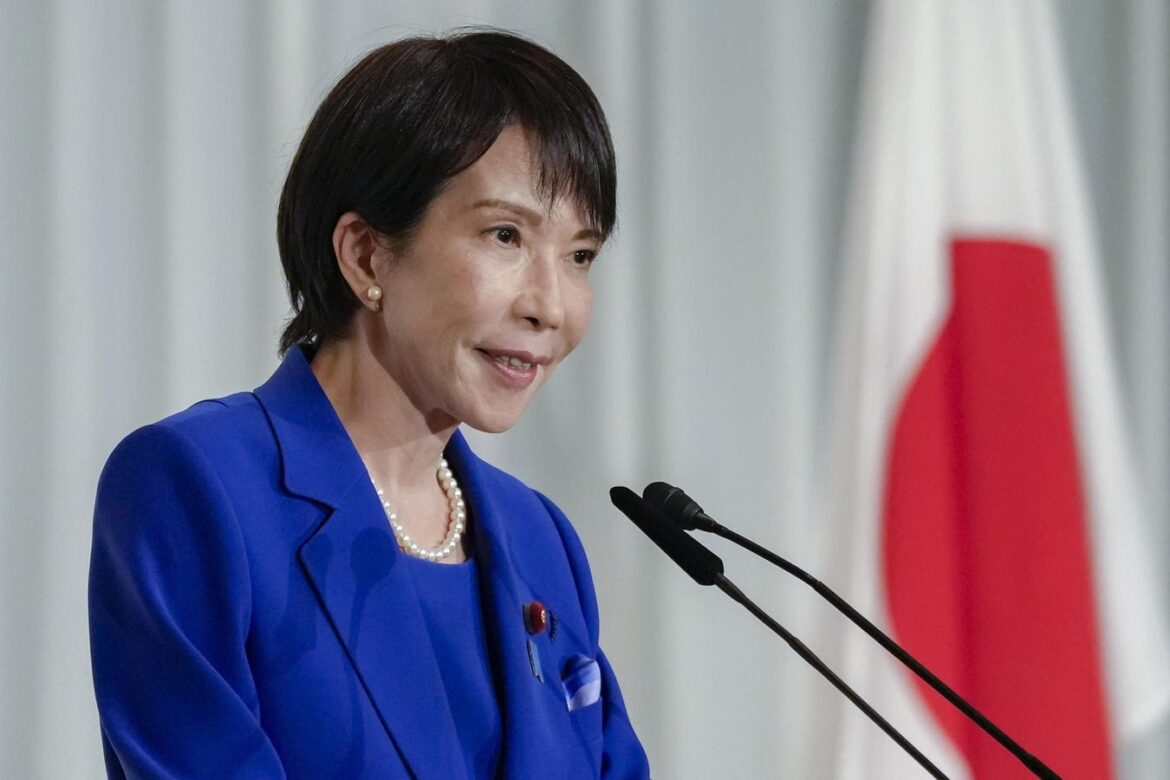Sanae Takaichi, newly-elected leader of the Liberal Democratic Party (LDP), speaks during a news conference at the party’s headquarters in Tokyo, Japan, on Saturday, Oct. 4, 2025.
Toru Hanai/Bloomberg
The big moment for which the female half of Japan’s 125 million people has been waiting for is here, and her name is Sanae Takaichi.
On Monday, the ruling Liberal Democratic Party, which has led Japan almost uninterrupted since 1955, elected a woman as its leader for the very first time. Takaichi, 64, has until October 15 to cobble together a governing coalition to become prime minister.
You’d think women would be super excited about this milestone. There’s scant evidence they are.
One reason is that Takaichi is not really anyone’s idea of a progressive feminist ally. Though she counts former Prime Ministers Shinzo Abe and Margaret Thatcher as personal heroes, Takaichi is more hardline conservative than both.
Takaichi is against even the most basic ask from feminists: the right of a woman to keep her maiden name after marriage. She opposes allowing women to ascend to the Chrysanthemum Throne, despite the current emperor having no sons and Japan’s history of having several empresses in the past.
The next prime minister’s plan for Asia’s second-biggest economy is to double down on Abe’s failure to empower women from 2012 to 2020. She plans to resurrect “Abenomics,” which promised to make women “shine.” Instead, the effort itself was a shiny object.
If so, women have every reason to worry that Japan’s first female leader will undermine women’s economic potential.
Abe led the LDP back to power in 2012, in part by pledging to fill 30% of senior positions in both the public and private sectors by 2020. Within two years, Abe gave up. The target was slashed to 7% for senior government jobs and 15% at companies.
The metrics are pretty damning. In 2012, Japan ranked 101st in the World Economic Forum’s gender equality index. Today, it ranks 118th out of 148 countries, a 17–point backslide. In terms of women holding political office, Japan trails Saudi Arabia by 18 spots, according to the Geneva-based Inter-Parliamentary Union.
Far from being revived, Abe’s weak “womenomics” policies should be pushed aside and replaced with a bolder and more coherent strategy. If Takaichi has one, now would be a great time to tell Japan’s underutilized female masses. Sadly, she’s mostly flirted with a bit of gender tokenism here and there.
Abe sure did. Rather than offer tax incentives from companies promoting women or imposing quotas, Abe would name a few women to his cabinet, mostly running lesser ministries.
On the campaign trail earlier this month, Takaichi stated that she would increase the number of women in her cabinet to the level of those in socially progressive Nordic countries. That, of course, would be great. No one is holding their breath, though. Takaichi could indeed make a difference by naming three women simultaneously to the most important jobs in the land: finance minister, foreign minister and chief cabinet secretary.
It’s not a good bet, considering that Tokyo’s notorious patriarchy is still pulling the strings. Japanese prime ministers only tend to get 12 months in office, as outgoing Prime Minister Shigeru Ishiba got. Eight of Japan’s 10 premiers since 2006 came and went in 365 days. If Takaichi veers too far toward gender equality, the male-dominated empire is sure to strike back, and quickly.
The fact that Takaichi chose Taro Aso, 85, to be vice president of her ruling party isn’t a promising signal for gender-related progress. Aso, prime minister for one of these brief 12 stints (2008-2009), is a one-man gaffe machine, including unfortunate comments of the sexist variety.
In January 2024, for example, it was remarkable that male-dominated Japan had a female foreign minister at all. Aso didn’t think she was pretty enough. In speech, Aso called Yoko Kamimura, who’s 13 years his junior, an “obasan,” which is often used to disparage a woman who’s no longer deemed young.
As Aso he said: “The Yoko Kamimura is a big deal, you know. Even from our point of view, wow, this ‘obasan’ is good. I wouldn’t say that she’s that beautiful, but at least, she definitely speaks with an air of authority, speaks proper English, of course, and does everything herself, from making appointments to whatnot.”
Of all the many graybeards in the LDP, this is who Takaichi wants at her side. Along with a policy platform devoid of clear and promising policies to empower the female half of Japan’s electorate, women have every reason to worry that the first female leader won’t smash the glass ceiling for them, too.


AloJapan.com